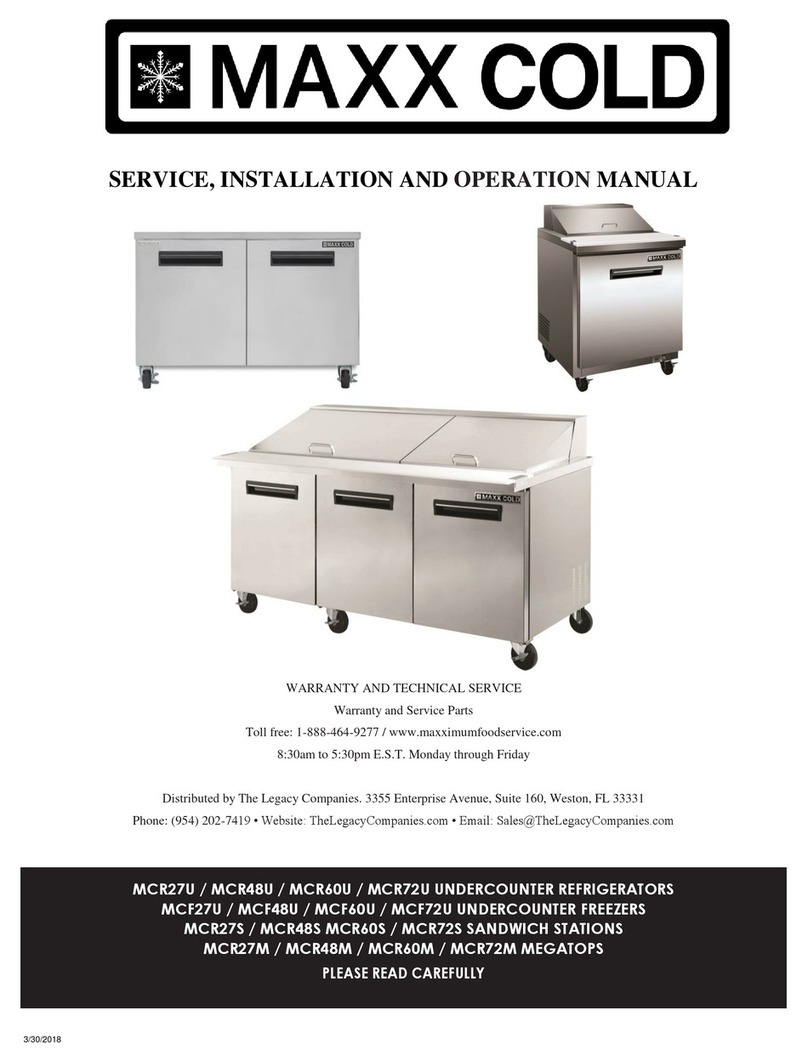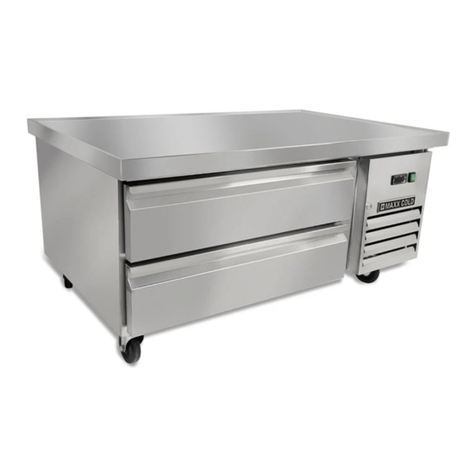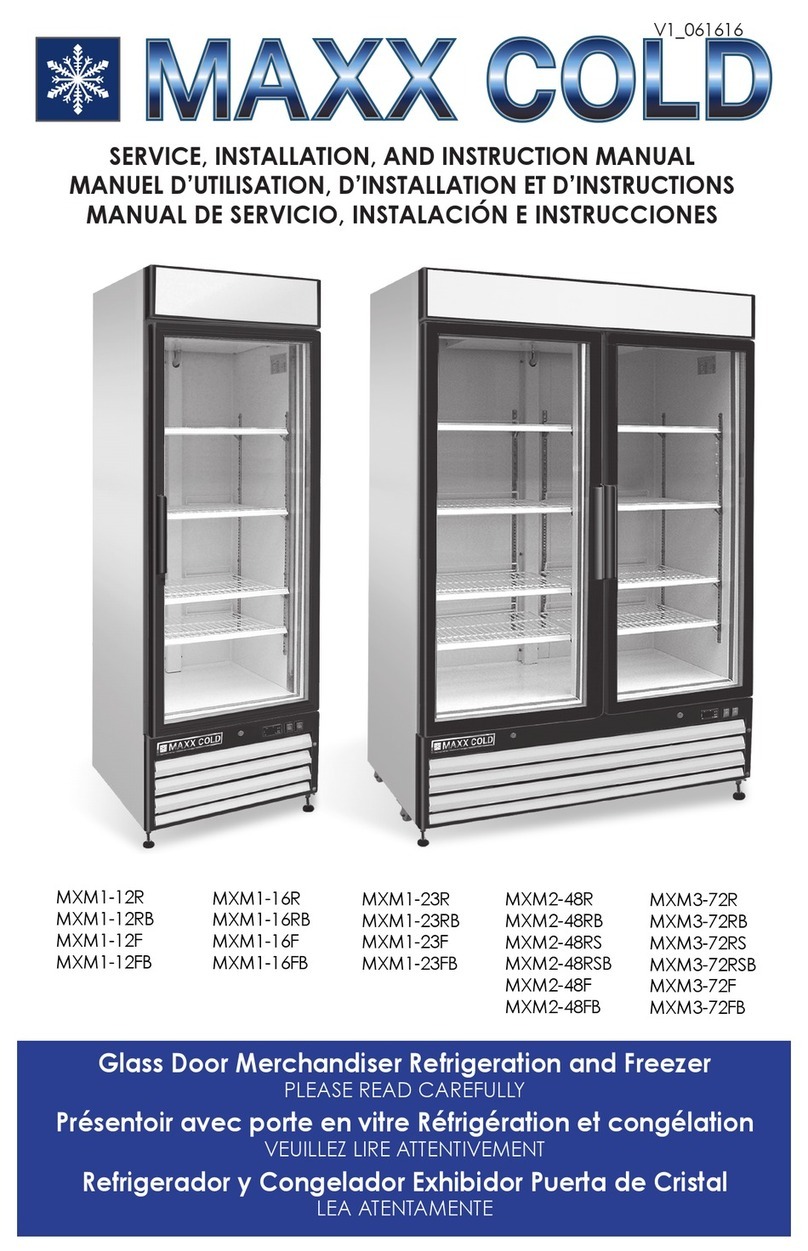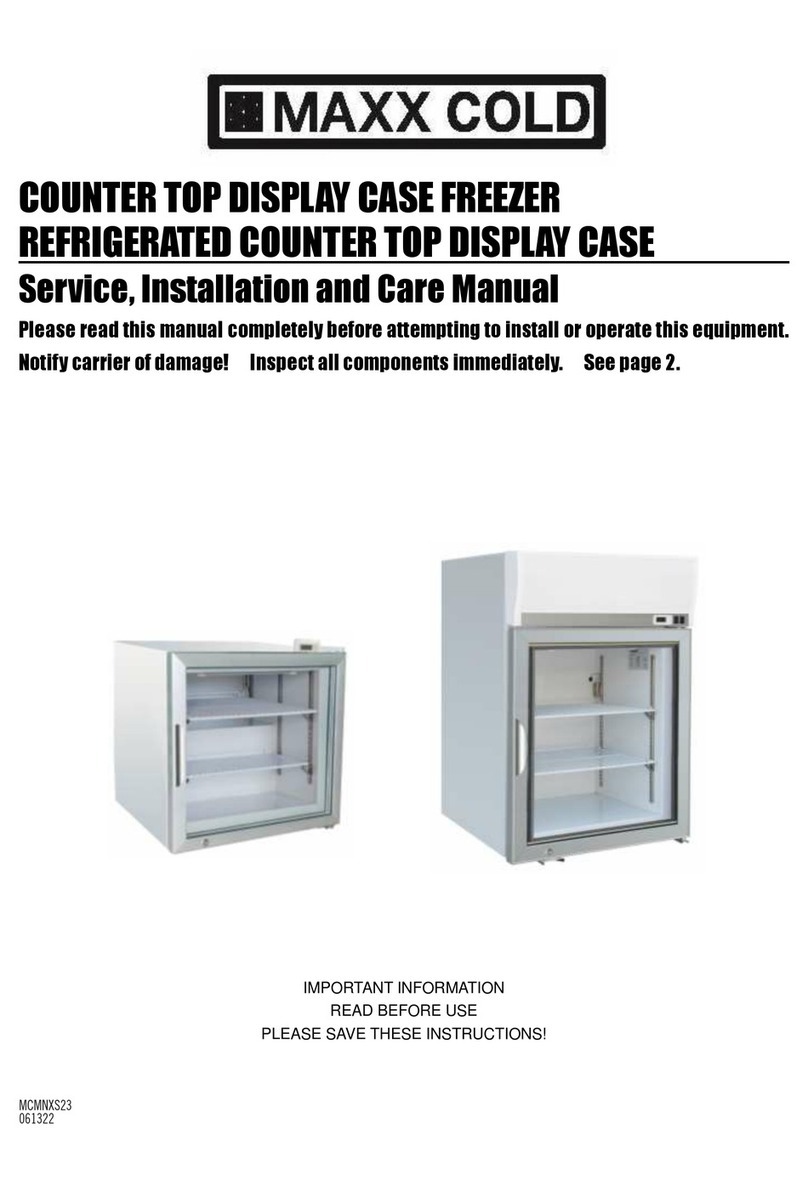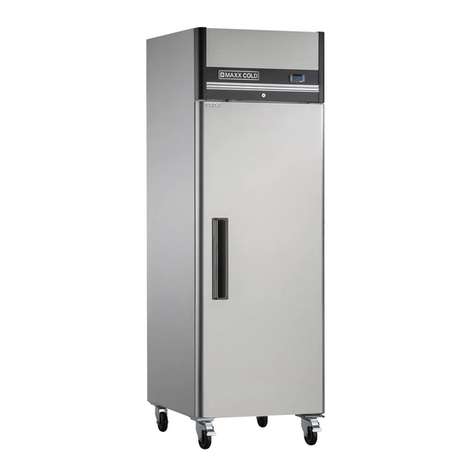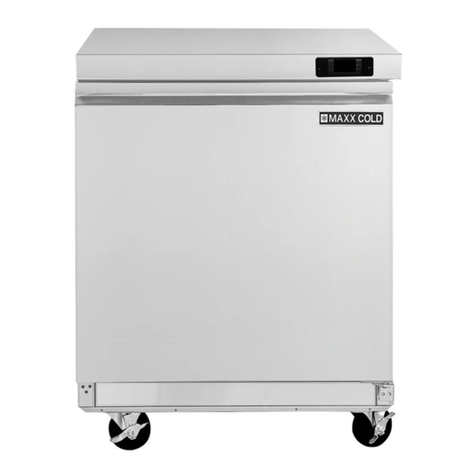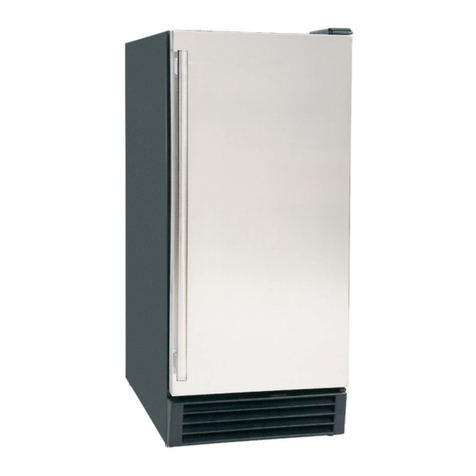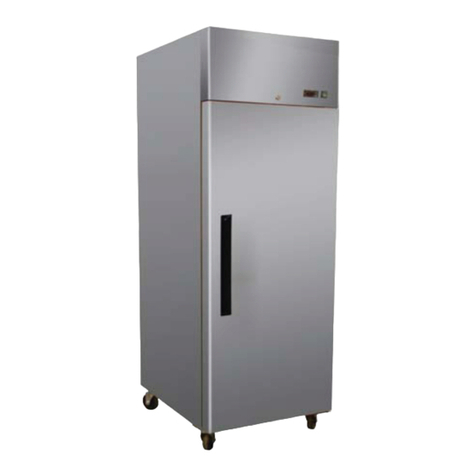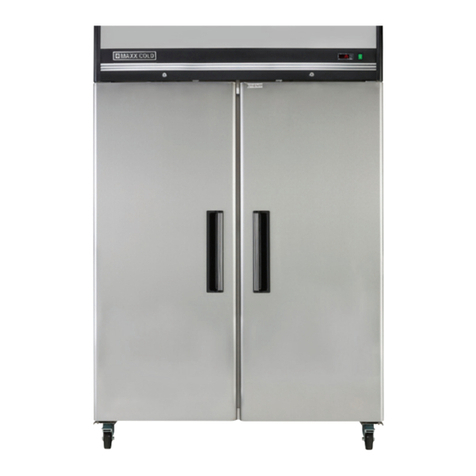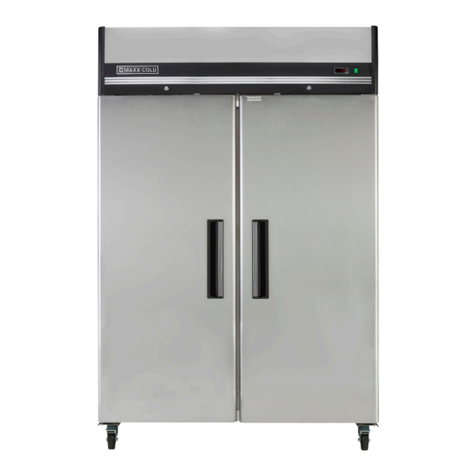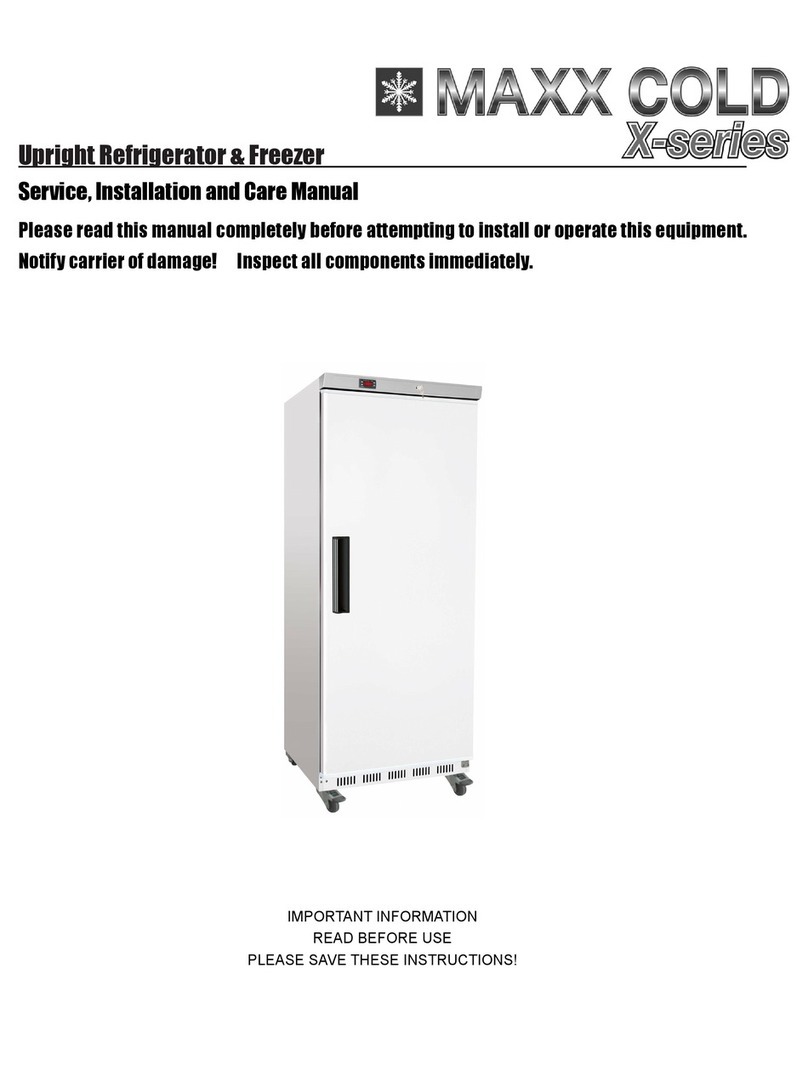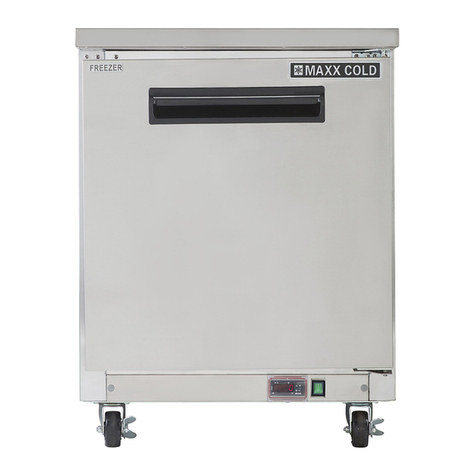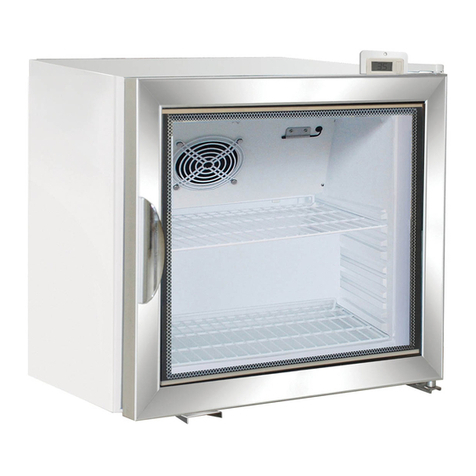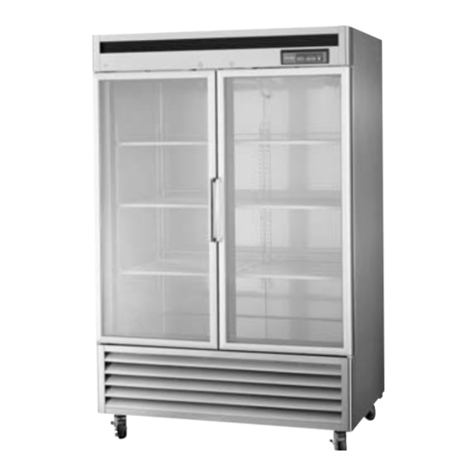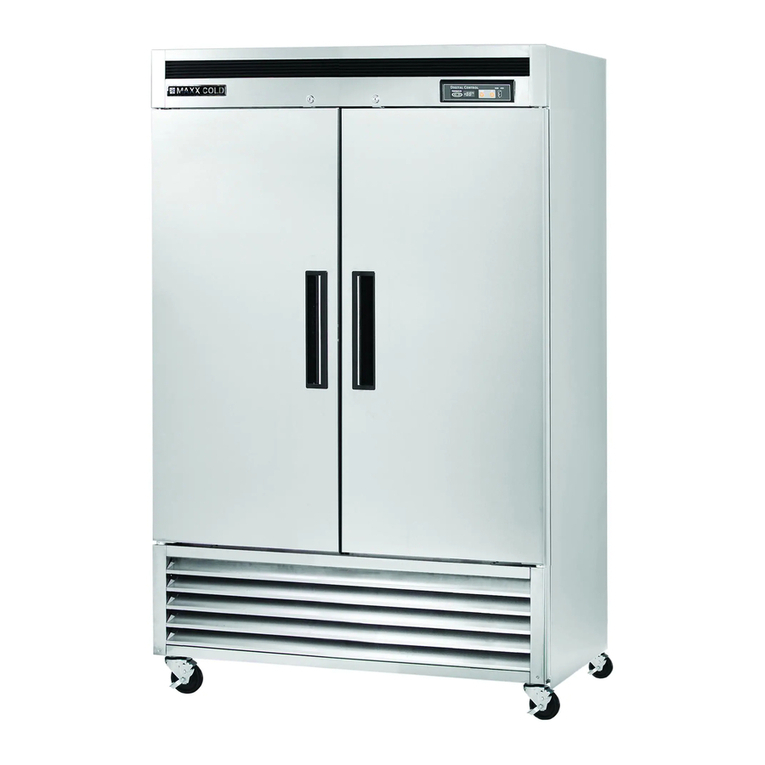
Service and Installation Manual
MAINTENANCE
DANGER
The power switch must be turned OFF and the unit disconnected from the power source
whenever performing service, maintenance functions or cleaning the refrigerated area.
Refrigerators and Freezers
The interior and exterior can be cleaned using a mild detergent and warm water. If this isn't sufficient, use a
nonabrasive liquid cleaner, preferably one intended for use as a stainless steel cleaner and polisher. When cleaning the
exterior, always rub with the "grain" of the stainless steel to avoid marring the finish.
Do not use an abrasive cleaner because it will scratch the stainless steel and plastic and can damage the breaker
strips and gaskets. Always use a soft cloth or microfiber towel to apply cleaner and to dry the unit. Use of a stiff
brush or pad can damage the protective chromium oxide layer on the surface.
Cleaning the Condenser Coil
The condenser coil requires regular cleaning. Cleaning is recommended every 90 days. In some instances, you may
find that there is a large amount of debris and dust or grease accumulated prior to the 90 day time frame. In these
cases the condenser coil should be cleaned every 30 days.
If the build up on the coil consists of only light dust and debris, the condenser coil can be cleaned with a simple
brush. Heavier dust build-up may require a vacuum or even compressed air to blow through the condenser coil.
If heavy grease is present, there are de-greasing agents available for refrigeration use and specifically for the
condenser coils. The condenser coil may require cleaning with the de-greasing agent and then blown
Failure to maintain a clean condenser coil can initially cause high temperatures and excessive run times. Continuous
operation with dirty or clogged condenser coils can result in compressor failures. Neglecting the condenser coil
cleaning procedures will void any warranties associated with the compressor or cost to replace the compressor.
Never use a high pressure water wash for this cleaning procedure as water can damage the
electrical components located near or at the condenser coil.
DANGER
In order to maintain proper refrigeration performance, the condenser fins must be cleaned of dust, dirt and grease
regularly. It is recommended that this be done at least every three months. If conditions are such that the condenser is
totally blocked in three months, the frequency of cleaning should be increased. Clean the condenser with a vacuum
cleaner or stiff brush. If extremely dirty, a commercial-grade condenser cleaner may be required.
Stainless Steel Care and Cleaning
To prevent discoloration of rust on stainless steel, several important steps need to be taken. First, we need to
understand the properties of stainless steel. Stainless steel is at least 70% iron which will rust. It also contains at least
12% chromium which forms an invisible passive film over the steels surface which acts as a shield against corrosion.
As long as the protective layer is intact, the metal resists rusting. If the film is broken or contaminated, outside
elements can begin to breakdown the steel and begin to form rust of discoloration. The use of chlorinated cleaners
and hard water could result in staining and/or pitting of the stainless surface.
NEVER USE STEEL PADS, WIRE BRUSHES OR SCRAPERS, OR EXPOSE THE SURFACE
TO HARSH CLEANERS, HARD WATER, ACIDS OR CORROSIVE LIQUIDS
DANGER
Cleaning solutions need to be mild detergent/soap or non-chloride based. Any cleaner containing chlorides will damage
the protective film of the stainless steel. Chlorides are commonly found in hard water, salts, and household and
industrial cleaners. If cleaners containing chlorides are used, be sure to rinse and dry thoroughly.
Routine cleaning of stainless steel can be done with soap and water. Extreme stains or grease should be cleaned with a
non-abrasive cleaner and plastic scrub pad. It is always good to rub with the grain of the steel. There are also stainless
steel cleaners available which can restore and preserve the finish of the steels protective layer.
Early signs of stainless steel breakdown can consist of small pits and cracks. If this has begun, clean thoroughly and start
to apply stainless steel cleaners in attempt to restore the passivity of the steel. CitriSurf is a compound that will passivate
the protective chromium oxide surface if it has been penetrated and restore the luster to the stainless surface.
Never use an acid based cleaning solution! Many food products have an acidic content which can
deteriorate the finish. Be sure to clean all stainless steel surfaces.
CAUTION

